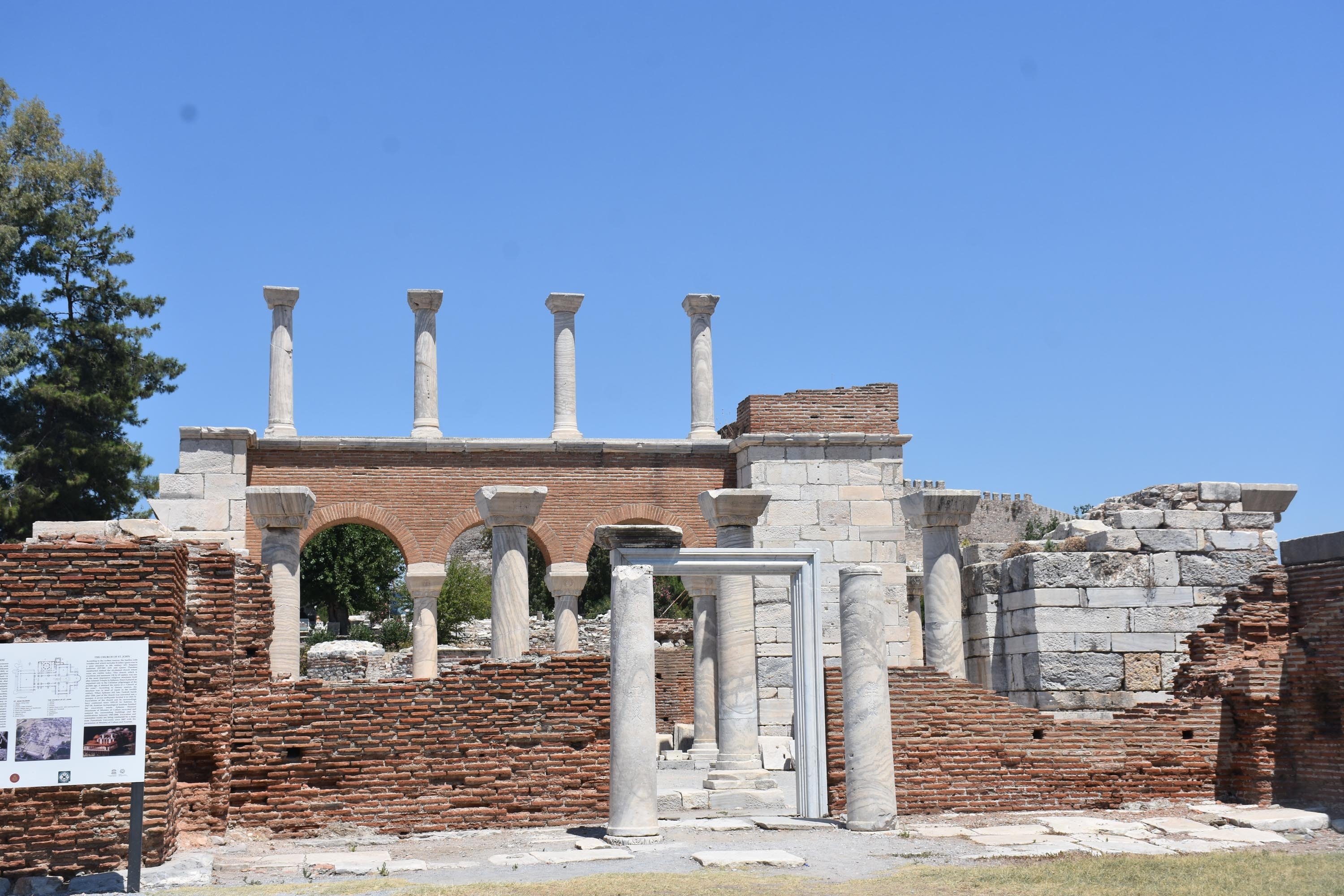
The excavations at Ayasuluk Hill in western Izmir province's Selçuk district revealed six more human skeletons at the ancient Saint-Jean Church.
Stating that the number of skeletons unearthed has increased to 12, excavation director Sinan Mimaroğlu said: "The skeletons found at the northern entrance of the church belong to the late Byzantine period. Burying around the church is a very natural practice in Christianity. It was considered a privilege to be buried around the church. Here, we encountered a large number of skeletons buried on top of each other."
The age and gender of the skeletons will be determined after the team conduct a genetic research.
Providing information about the structure of the region where archaeological excavations continue, Mimaroğlu added: "We are talking about an area that has been inhabited from the Bronze Age to the Ottoman Period. The most important surviving structure today is the church where the tomb of Saint John is located. This place is considered as a pilgrimage center for Christians."

Ayasuluk Castle was constructed during the Byzantine period. Thanks to the restoration efforts by Beylik of Aydınoğulları, the structure has regained some of its old glory. The early period schemes of the settlement correspond with Apasa, the capital of the Arzawa – a kingdom affiliated with the Hittites. With the spread of Christianity from the late Roman period, the region has become a very important center. The studies are expected to unveil even more information about the site.
The excavation director also states that the church embodies spiritual importance as the Virgin Mary and Saint John came to Ephasus and lived here. Also, it is believed that Saint John wrote the Bible here before he died.
"It is known that there was a basilica tomb here during the Theodosius period. In the A.D. sixth century, a monumental building was built. It represents an imperial structure in terms of its period. The materials used in its construction show us how this place was important. It is also the place where the tombs of a very important saints are located," Mimaroğlu added.
Stating that the excavations started in 1922, Mimaroğlu said: "These excavations have been conducted off and on for 100 years. We aimed to uncover answers to certain questions. The first of these was directed to the places in the north of the church. We conducted a georadar study in this area, and we found that there is a two-story building under the ground. I believe that the venues will reveal the rituals performed here."
Stating that excavation work also took place inside the church, Mimaroğlu said: "A study regarding the first construction on the church is taking place. We have conducted important work here. No research has been carried out on the ground on which the church sits. The data we obtained is being evaluated. According to this data, we think that important results will be obtained regarding the first construction of the church, which has gone undiscovered until now."
